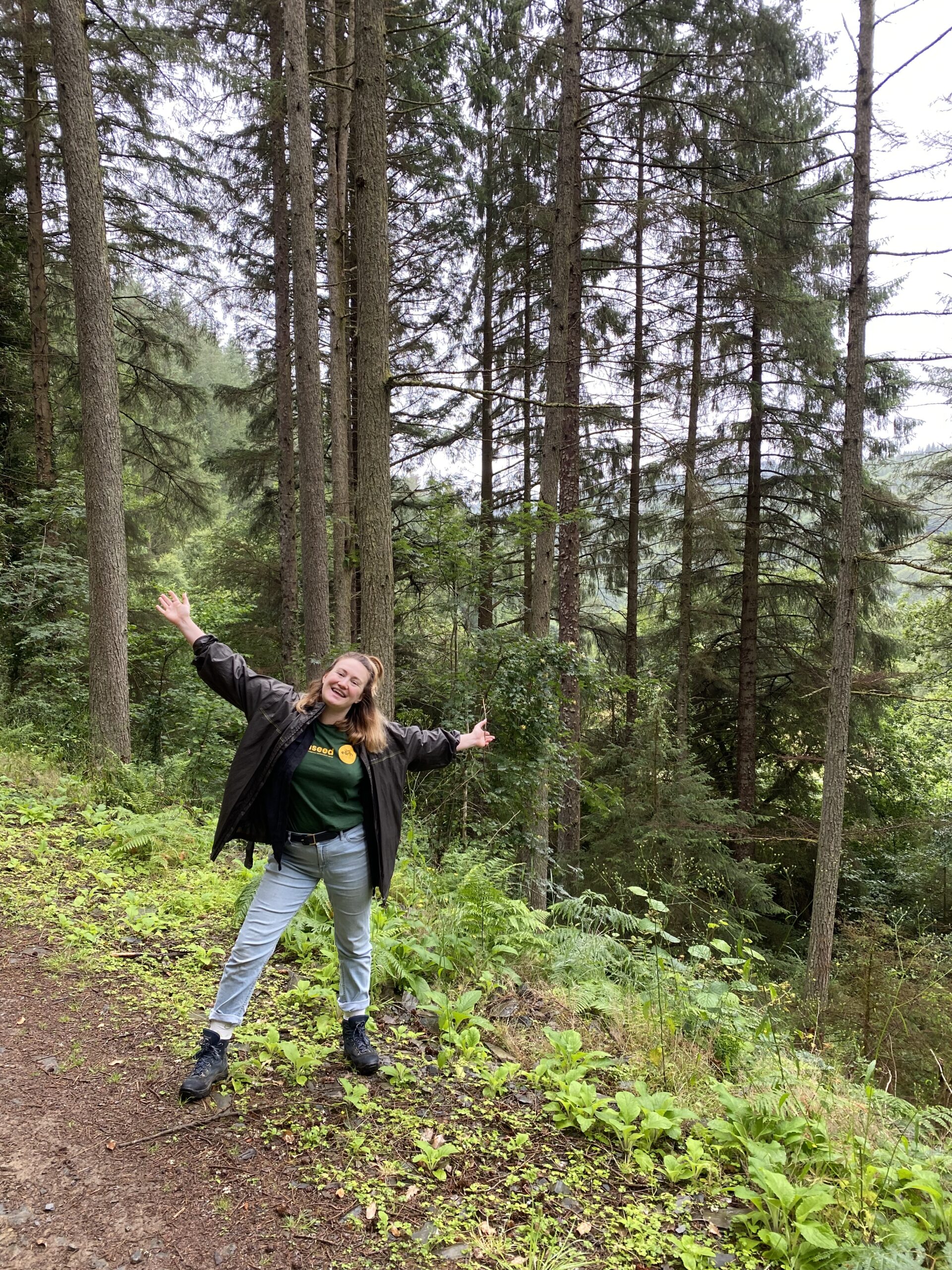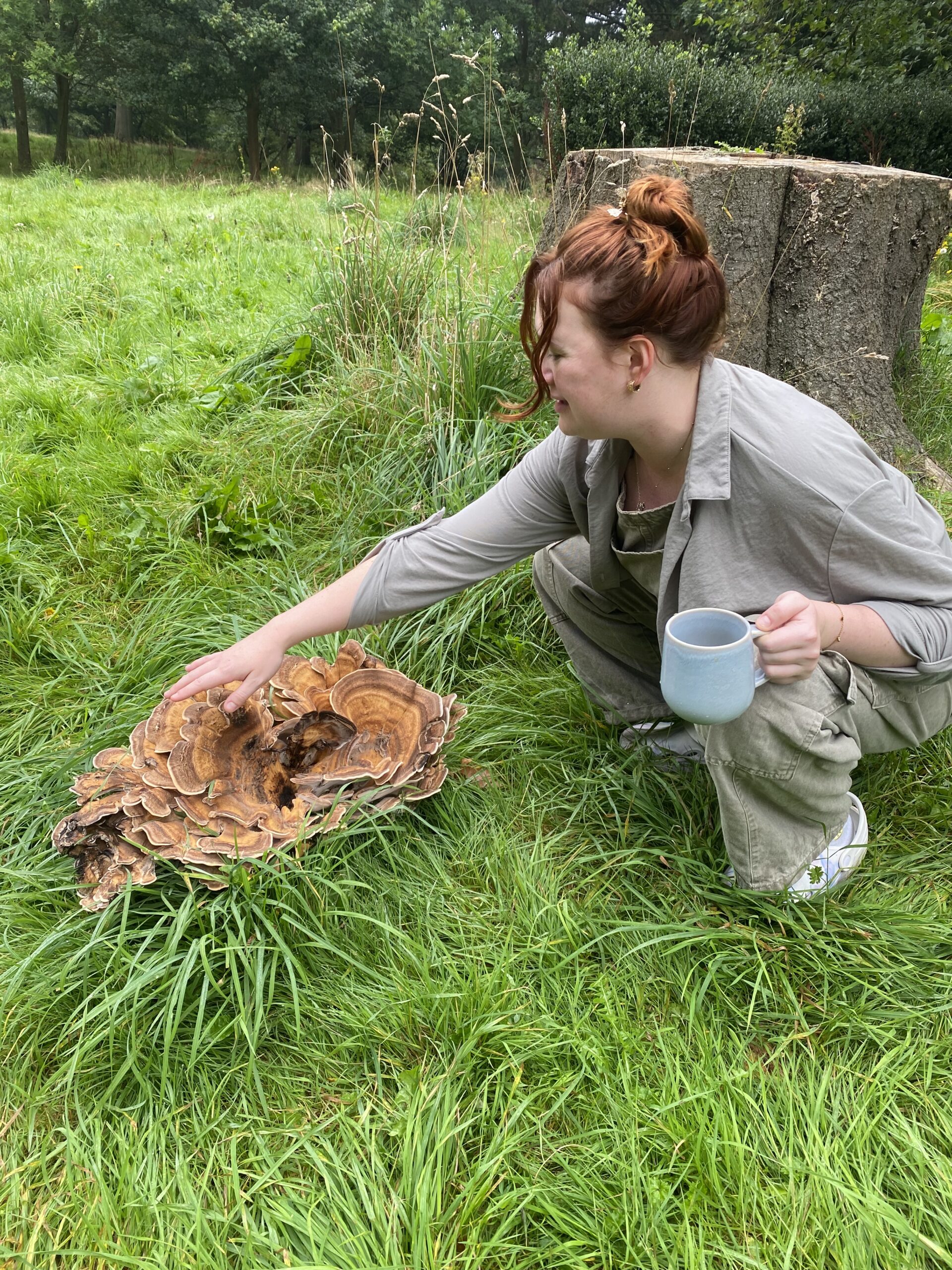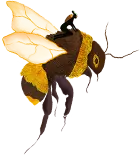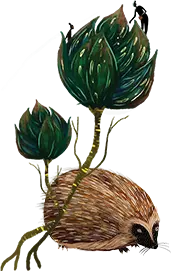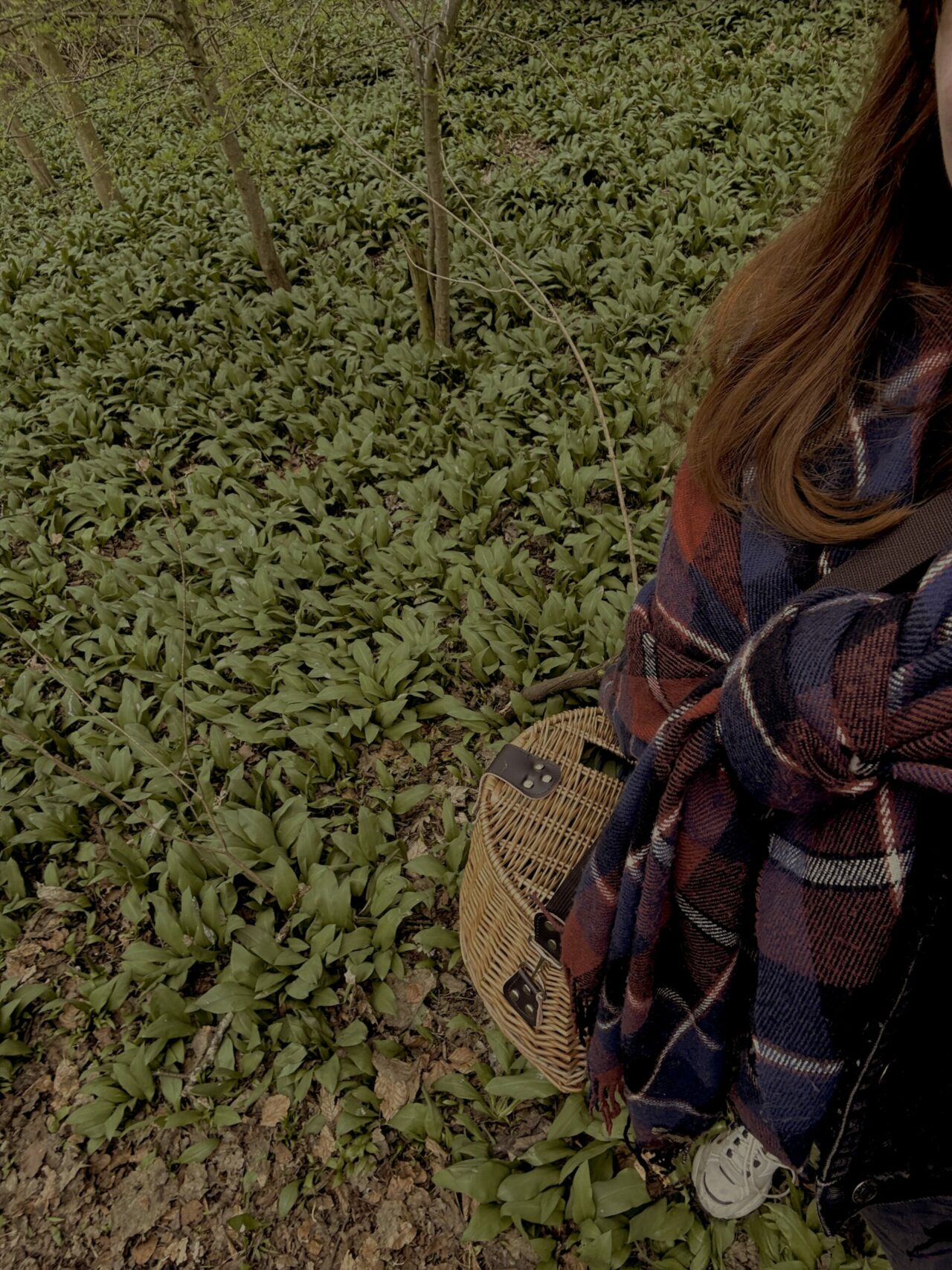
Eating from the Earth: My Foraging Journey
Lucy O’Hagan, ReWild Yourself Champion of 2025, explained in their wonderful talk with us (available to watch HERE) the benefits they reap from ‘eating wild’. From nettles to deer, their deep connection with finding, appreciating and preparing wild fungi, flora and fauna into food and medicine struck a chord with our foraging-enthusiast, fungi-obsessed team member…
This blog is written from the personal perspective of Catrina Wilks, Marketing Manager and ‘Foraging Queen’ of the ReWild Yourself Team and includes her own photography and recipes.

Spring is in full bloom in the UK, which marks the beginning of the foraging calendar year for me. As soon as the wild garlic pops up in sprawling scented fields of green under budding trees, and I watch and wait patiently for it to mature and flower before picking… my kitchen comes wildly alive.
Foraging, or ‘tracking’ as Lucy discussed in their Champion interview, seems to have made a resurgence in recent years amongst people seeking alternatives to mass produced food and medicines in this part of the world. Tips and knowledge that was once lost is now shared online through social media, books and blogs. We’re coming back to the land and with that, relearning the seasons and the rhythm of the Earth. By eating seasonally, we are nourishing our bodies with the gifts we find at exactly the correct times of year that we need them —
Spring brings wild garlic, which supports against heart disease, microbial infection, oxidative stress and supports the immune system.
Summer berries are rich in antioxidants, aid heart, brain and dental health and help our digestive system with their anti-inflammatory properties.
Autumnal mushrooms are packed with nutrients such as calcium and vitamin D, which are crucial for strong bones.
Chestnuts, traditionally roasted in winter, hold healthy fats to see us through colder seasons and make us feel fuller for longer.
Throughout the year, we can usually always find nettles. Hardy and holding strong through most months, the stinging nettle has been used for hundreds of years to treat painful muscles and joints, eczema, arthritis, gout, and anaemia. Today, many people use it for urinary tract infections, hay fever, or in compresses or creams for treating joint pain, sprains and strains, tendonitis and insect bites.
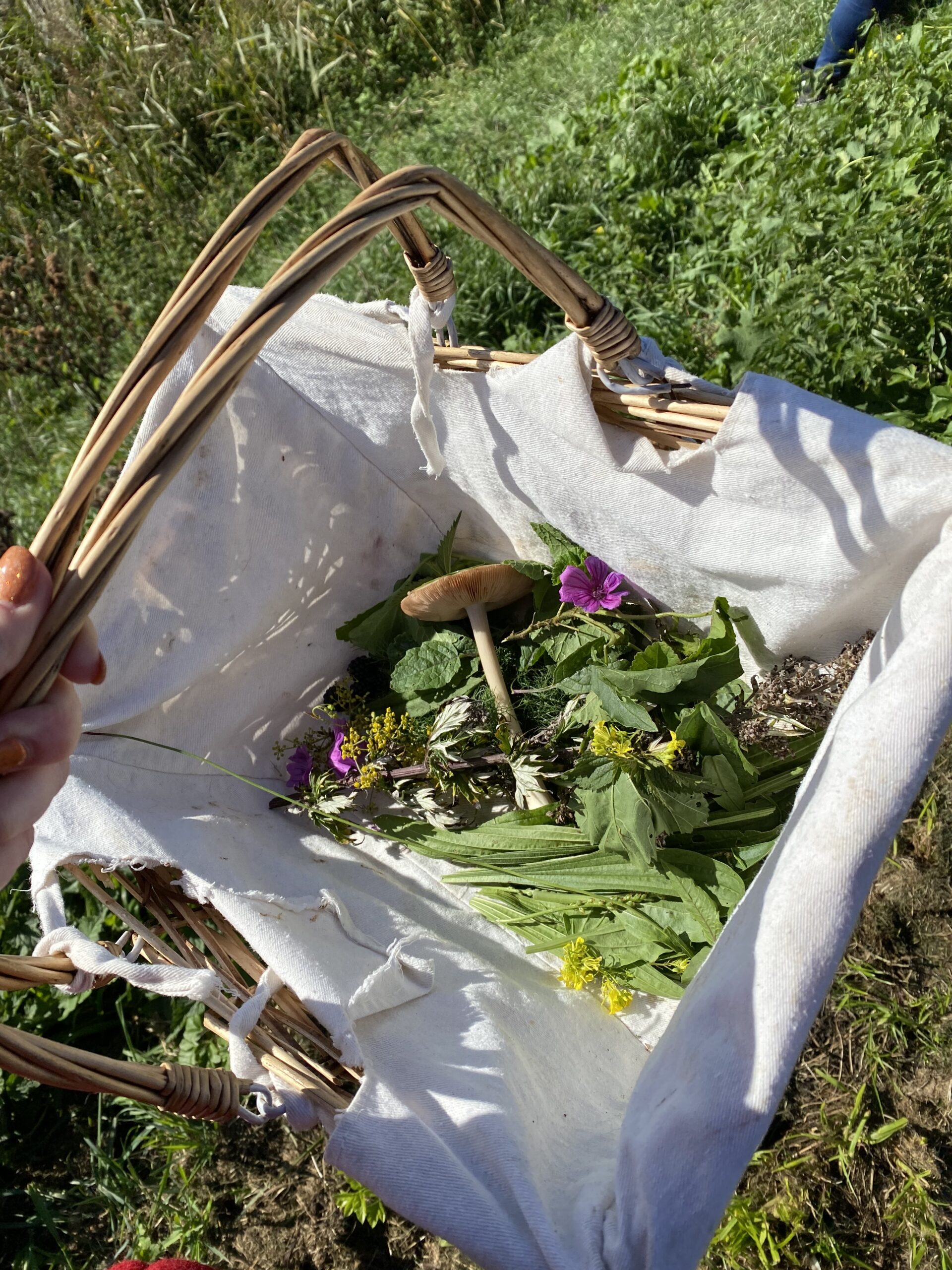
For me, the magic of finding the gifts offered from the Earth is akin to an Easter egg hunt, or following an old treasure map… one that we create ourselves, through acquired knowledge of habitats, ecological locations, weather patterns, appropriate sunlight or shade, how to correctly identify and common misconceptions.
When foraging, we come together with the natural world on a deeper level. We tune out of our phones, or work, or worries; and we tune into Nature, using all of our senses to find, feel, smell, taste, listen.
Eating wild also brings the deep satisfaction of creating with raw, organic, seasonal produce that benefits the ecosystems of the plants and animals surrounding it — it’s supposed to be there. There will never be anything that meets the joy of the first time I made a fully foraged meal from wild garlic, nettles, purslane leaves, penny bun mushrooms (porcini) and chanterelles found in a forest deep in the Welsh region of Snowdonia.
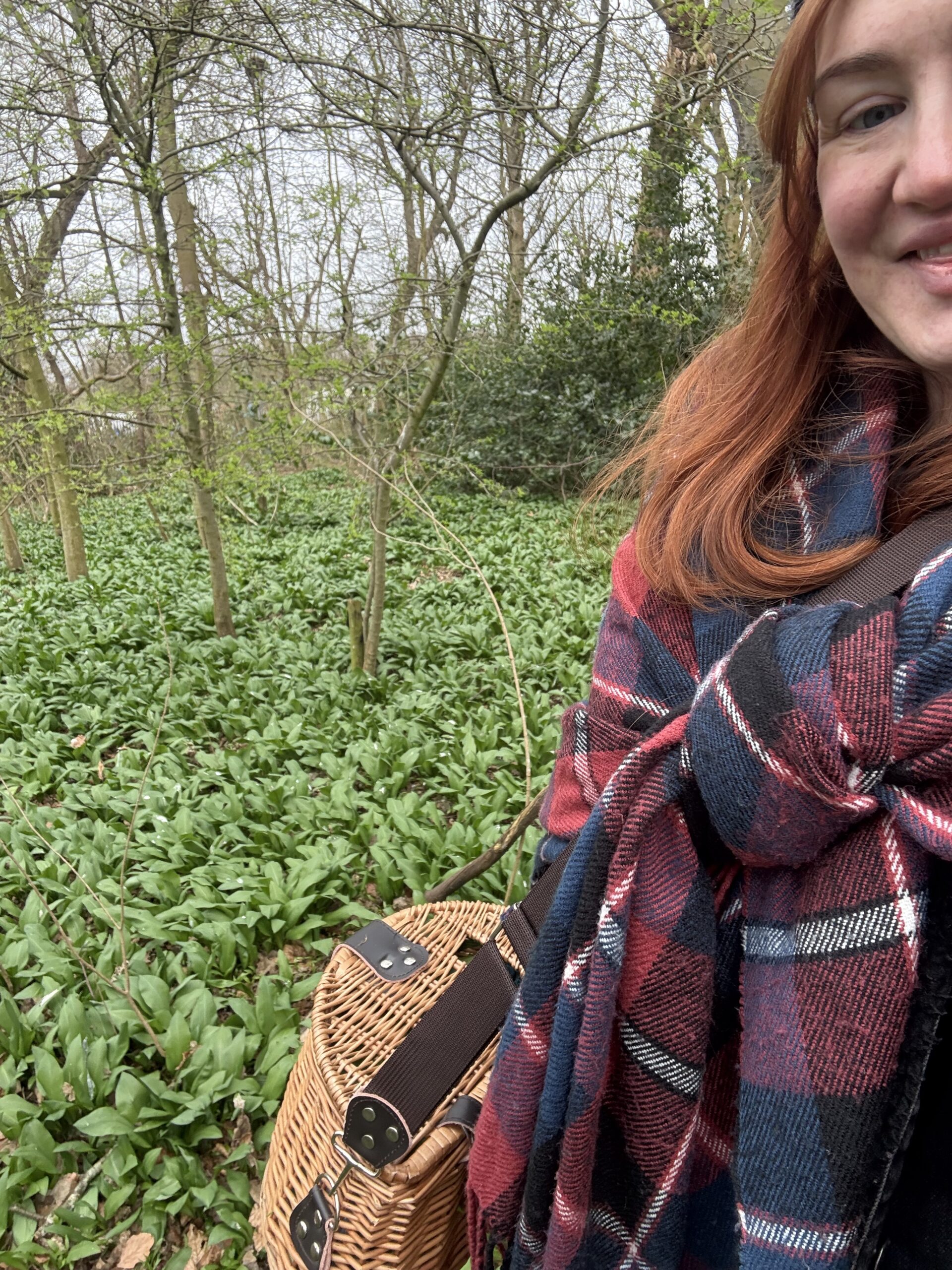
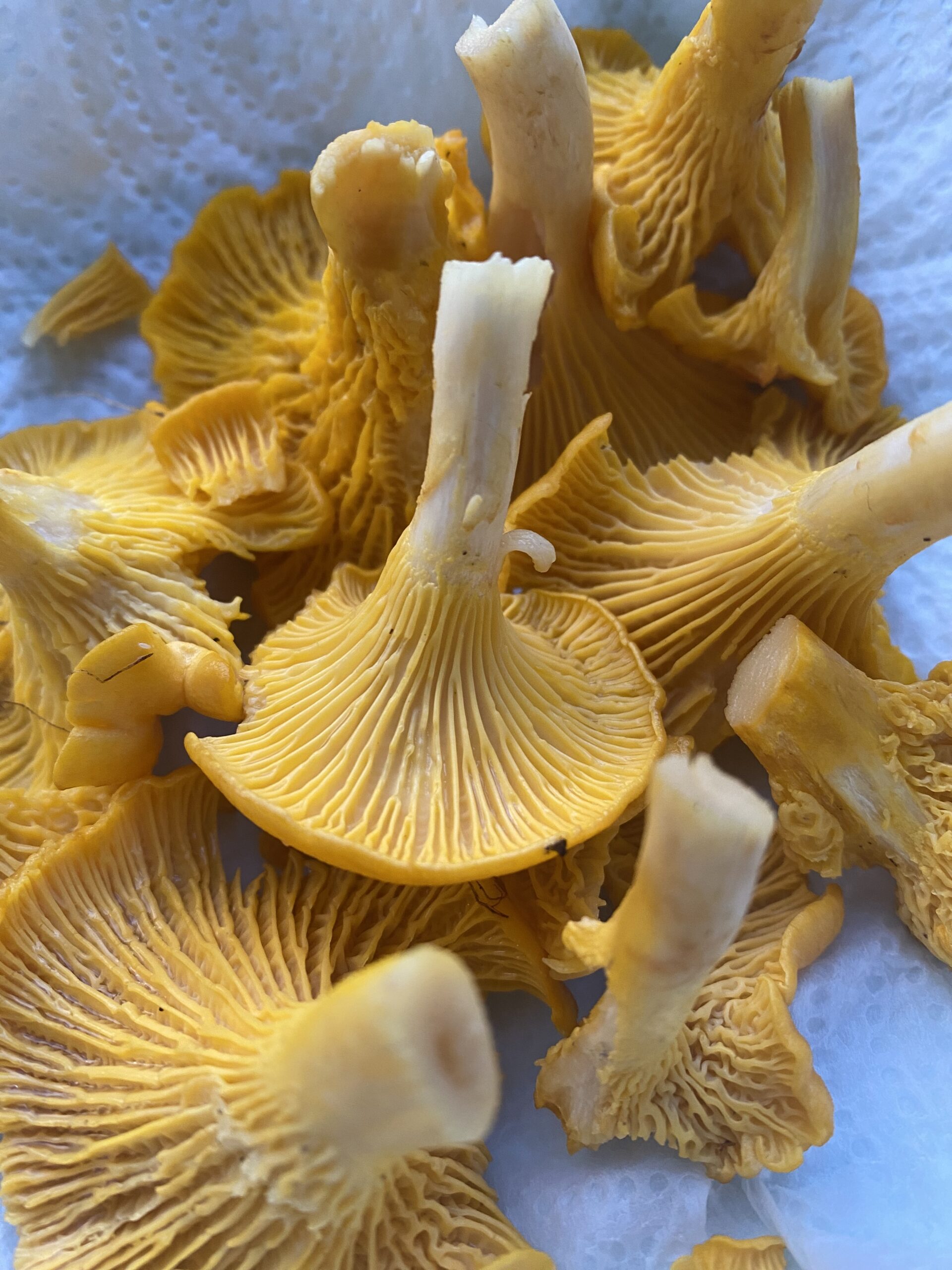
How to start foraging?
Beginning in foraging can be tricky as there are many dangers as well as delights. The best place to start, in my opinion, is by consulting the professionals — whether that’s published authors, blogs like Wild Food UK, guided experiences or by growing wild food at home first.
My journey to wild food began in 2019 through a Netflix film by Louie Schwartzberg – ‘Fantastic Fungi’.
Until then, mushrooms to me had been an addition to a meal – breakfast mushrooms on toast or popped in a pasta; rarely the main character of a dish unless it was a mushroom risotto with lots of cheese. I knew of a mushroom farm close to where I grew up, and knew only that it was rather smelly in the summer. I had no idea of the healing benefits, the mysteries of mycelium underfoot in every inch of the earth, or the vast range of species this under-researched category of life contained. I became obsessed.
For my birthday that year, I received an Oyster Mushroom grow-kit from GroCycle. The kit includes a box, filled with a bag including inoculated mycelium and coffee grounds, which only needs to be cut open, soaked in water, placed in a semi-shaded area and spritzed with water twice a day.
I had no idea how quickly fungi would sprout, producing little buds within the first couple of days. From there on, each morning and every evening I would check the growth and be fascinated at the rate at which they turned from tiny bulbs into huge, flourishing mushrooms. Once they were big enough to be harvested, I cooked them up with hoisin sauce and devoured them in a bao bun topped with salted peanuts, pickled ginger, spring onions, sesame seeds and hot sauce – it changed the way I cooked, and my appreciation for wild food, forever.


I then attended a guided Foraging Experience with Totally Wild UK, which was set in the salty marshlands of Norfolk. We were led by a local expert to find Marsh Mallows (I had no idea that marshmallows were named after these mushrooms until that day), salty samphire, bramble berries, nettle, seaweed and a variety of other sea herbs and plants. We learned so much about the flora and fungi of the local land, including the history of how people could use lookalikes for dangerous purposes and poison in ancient centuries, and how to ensure they are safe to eat before consuming. Later, we laid them out in categories, created a crumble from the berries and ate it together, outside in the summer sun.
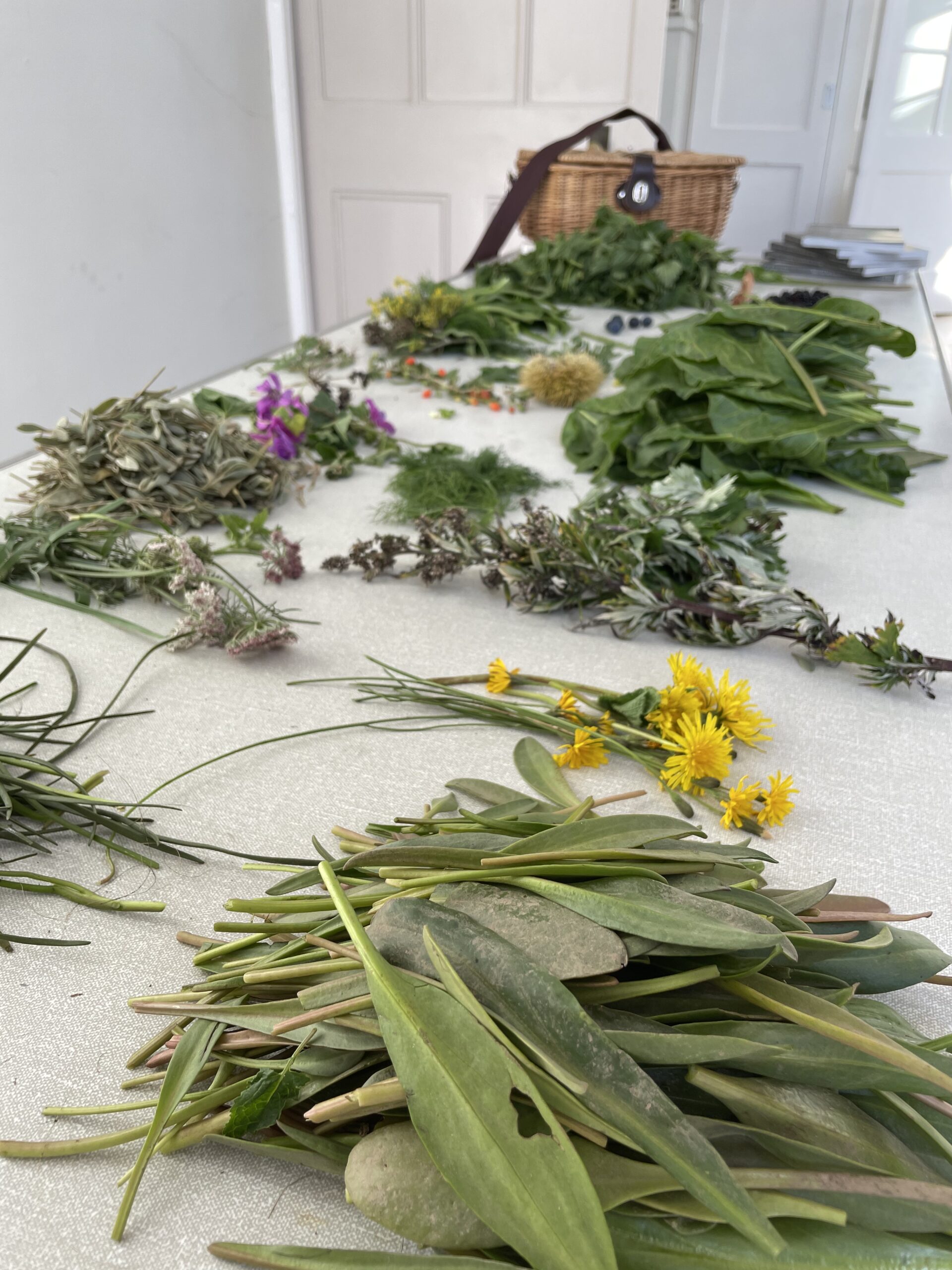
My most prized possession is now a large book by Roger Phillips called Mushrooms. I call it my Mushroom Bible. It’s packed with knowledge, images, identification features, a small blurb for each species, measurements, habitats, edibility, risks, lookalikes and more through 400 pages and over 1250 photographs.
I also keep a small pocket guide with me most of the time just in case I find something in the city or on a walk – it’s much lighter to carry than the Mushroom Bible!
You can check out Roger Phillips’ work on fungi and more here:
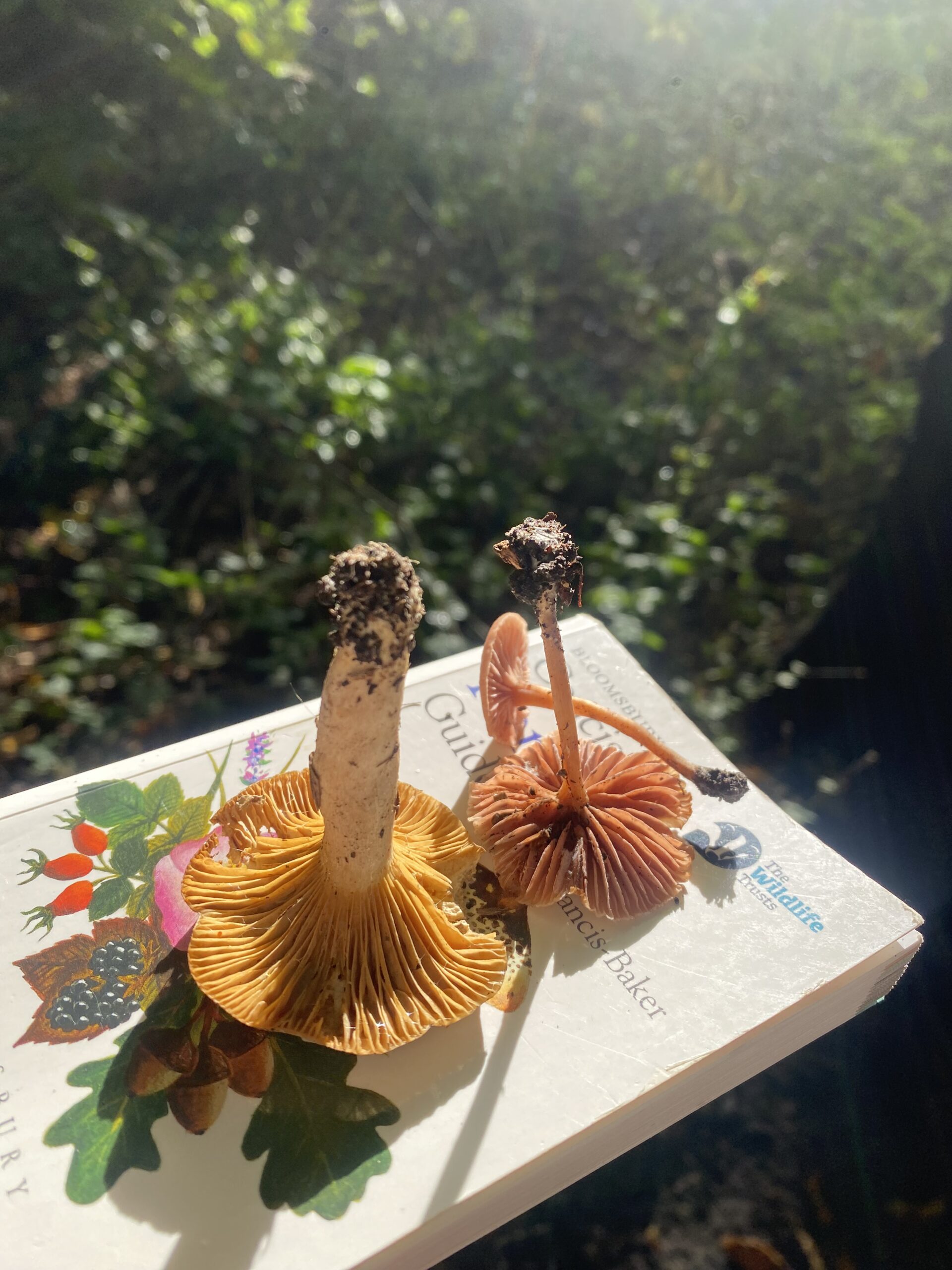
What to make with your foraged finds? Here’s some recipes…
Here’s a list of some of my favourite things to forage in the UK, and what I make with them:
Bramble Berries:
- Habitat: Hedgerows, abundant in the UK
- Edible parts: Fruit – pick from the top to avoid animal contact
- Season: Summer June – August
- Toxic Lookalike: None
- Benefits: HERE
- Recipe idea: Blackberry Crumble with custard (enjoy hot or cold)
Chanterelle Mushrooms:
- Habitat: Damp soil, in shade, woodland – often near a flowing river
- Edible parts: All
- Season: July-October
- Toxic Lookalike: False Chanterelle is a toxic lookalike – see more on this link HERE
- Benefits: HERE
- Recipe idea: Toss up with butter, black pepper, sea salt and herbs – enjoy alone or with a hunk of toasted seed bread
Samphire:
- Habitat: Coastal marsh land, near the sea, in sodium rich soils – grows in salty water only
- Edible parts: All
- Season: May-September
- Toxic Lookalike: None – both traditional samphire and rock samphire are safe to eat
- Benefits: HERE
- Recipe: Garlic Samphire with Lemon & Almonds – a perfect side dish to a summer lunch
Nettle:
- Habitat: Abundant in most habitats!
- Edible parts: All
- Season: All year round – easiest to find healthy leaves from March to October
- Toxic Lookalike: None – can be confused with Dead Nettle, but this is also safe to eat
- Benefits: HERE
- Recipe idea: Nettle soup, served with nettle and feta scones
Wild Garlic:
- Habitat: Shaded woodland
- Edible parts: Leaves, flowers, stem, bulb
- Season: Spring-Summer / March-June
- Toxic Lookalike: Lords and Ladies, especially young leaves — double check before eating
- Benefits: HERE
Here’s one of my very own recipes to try…
Wild Garlic Pesto:
(enjoy with fresh pasta, roasted vine tomatoes and mushrooms)
Ingredients – (blend all together):
- 50g wild garlic, washed
- 3tbsp extra virgin olive oil
- 30g parmesan cheese
- 50g hard nuts (I use walnuts, hazelnuts, almonds and Brazil nuts)
- Handful fresh basil leaves
- Sea salt
- Fresh black pepper
- Juice of one lemon
See results below – delicious!
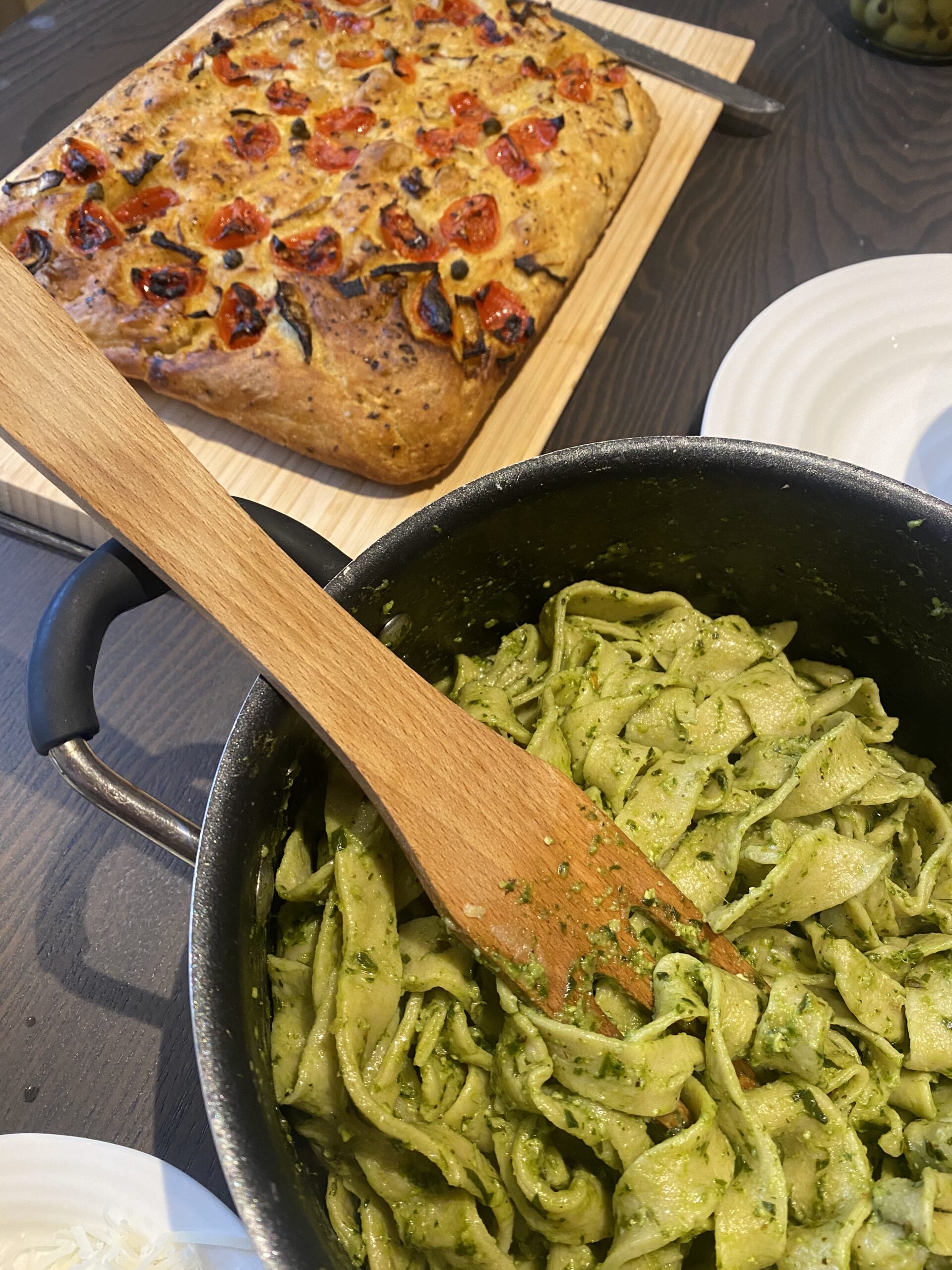
Staying safe with wild food…
Now that I’m more confident in my findings, I tend to revisit the same patches of woodland in the UK year on year and have crafted my ability to recognise edible or potentially dangerous mushrooms using spore prints. This is a common way to correctly identify your findings, and something I do every time.
To create a mushroom spore print, you remove the stalk and pop the cap of the mushroom onto a clear surface (I use a mirror), leaving overnight. As the spores are released in the darkness, they will leave a print in a colour – usually white, grey, brown or black.
This is then compared to the research in my ‘Mushroom Bible’. That’s how we’d know if it’s safe to eat or not… Inedible fungi are tossed back into the forest where they belongs and can spore further.
You can find out more about this here:
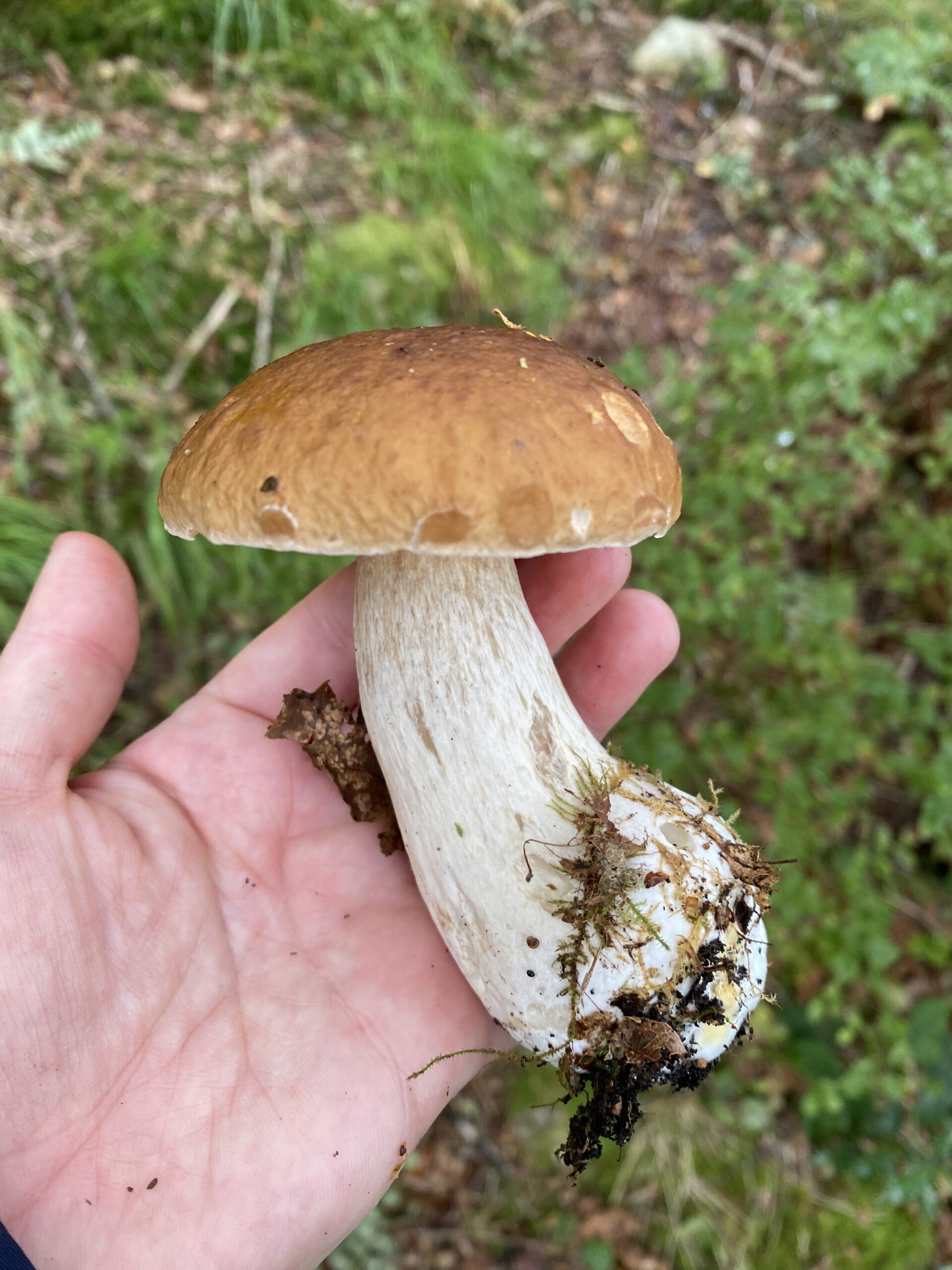

My favourite places to forage are small spots in North Wales, Cheshire, Devon and the Cairngorms National Park in Scotland – but you can find many edible plants in and around cities, especially near canals and on the outskirts of allotments. My local park is packed with wild garlic in the spring, nettles, nuts and fungi throughout the year.
Please remember to stay safe and always consult an expert if in doubt of your findings. A wonderful forager I follow on Instagram is Alexis Nicole (@blackforager) who makes content about safe, seasonal foraging in the US – check her out!
